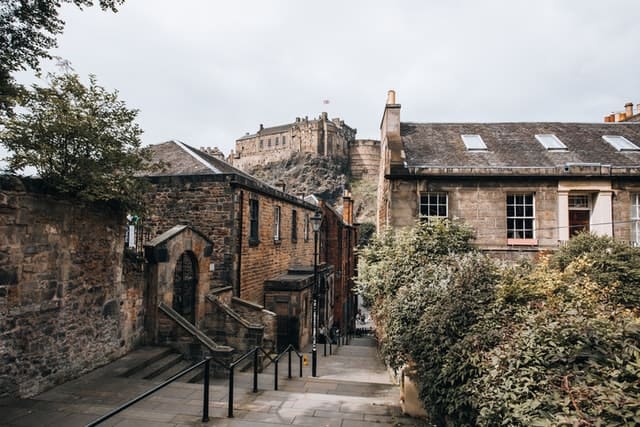
Damp on chimney breast
What Can Cause Damp Patches on a Chimney Breast?
Whether you have a traditional log burning fire or your fireplace is decorative only, it’s never a good sign when you begin to see damp patches and staining appearing on the chimney breast in your home. While it might be tempting to simply paint over the damp or use it as an excuse to wallpaper a new feature wall in the room, the unfortunate truth is that damp in this area is unlikely to go away on its own and will probably come back in the future to ruin all your hard work. Figuring out the root cause and treating it as quickly as possible is important for dealing with damp issues on a chimney breast.
What are the Common Causes of a Damp Patch on Chimney Breast?
There are several common causes of a damp patch on your chimney breast, including condensation forming on the inside of the chimney, rain water or other sources of external moisture getting inside the chimney, or hygroscopic salts, which draw moisture into the walls.
Reasons for the Damp on Chimney Breast:
If you’ve noticed damp patches on your chimney breast, it could be due to one of the following reasons:
1. Rain Water:
If rain water or other sources of moisture from outdoors are finding their way inside, this can lead to the signs of penetrating damp on the chimney breast. Whether your chimney is still in use or has been sealed up, leaks can be a common cause of moisture damage. There are several sources where moisture may be able to leak into your chimney including from the top of the chimney is not protected with a cowl or cap, and through cracks inside the chimney, which become more common in older homes. In addition, damage to other parts of the house can sometimes lead to damp patches appearing on the chimney breast due to moisture getting through.
2. Condensation:
If there are no signs of leaks or gaps where moisture could penetrate the walls in your property, the damp on your chimney breast may be due to condensation. Whether or not your chimney is in use, it will require ventilation. A lack of ventilation tends to cause more damp problems when the chimney is not in use, however. When a chimney has been sealed up, the airflow will be restricted – which can lead to the formation of condensation. If you have a working fire and the chimney is in use, water vapour will be an unavoidable product of burning your fire. When everything is working correctly, the water vapour will pass easily through the flue. However, if the chimney is not working effectively, this could lead to water vapour condensing on the walls too soon, causing damp.
3. Hygroscopic Salt:
If you are able to rule out penetrating damp and condensation, and your chimney damp is still persisting, hygroscopic salt could be the root cause of this issue in your home. This salt is a byproduct or burning fossil fuels like gas or coal and it absorbs minerals since they have been formed underground. If you have a coal or gas fire in your home, these salts are released into your chimney where they can build up. Since these salts attract moisture, they can lead to damp forming in your chimney breast.
Damp Chimney Breast in Bedroom or Living Room – How to Damp Proof
Whether you are experiencing damp problems in your chimney for the first time, have dealt with this issue in the past or simply want to avoid damp issues from forming in the chimney in the future, the good news is that there are several things that you can do to damp proof your chimney breast in the living room or bedroom. Some of the main things that you can do in your home to help avoid damp from forming in the chimney include:
1. Regular Chimney Cleaning:
Whether or not your chimney is in use, regular sweeping and cleaning will help to ensure that any blockages are removed before they can lead to damp problems. In addition, professional chimney cleaners are able to check your chimney for any signs of damage or cracks that could become a risk factor for penetrating damp in the future.
2. Burn Seasoned Wood:
If you have a log burner at home, avoid using wood with a high moisture content since this means that more water vapour will be released into the chimney. Dry, seasoned wood will release the least moisture content and is one of the easiest ways to keep your chimney dry and damp-free.
3. Chimney Liner:
If you do not already have a chimney liner, it’s worth considering having this done. A chimney liner will protect your chimney against damage and improve flue efficiency. If your chimney is lined but it has been a long time since it was installed, check the liner to ensure that it is still in good condition. Damage to the liner can lead to damp problems, so it might be worth having it replaced.
Damp on Chimney Breast After Rain
If you only notice damp on your chimney breast after there has been wet weather, there’s a high chance that this is a result of penetrating damp caused by moisture getting through from the outside. There are a few ways to check for the root cause of a damp patch on your chimney breast, including:
1. Check the Roof:
It’s worth taking a quick look at your roof to see if it could be contributing to the damp problems in your chimney breast. Go outside and look at your roof from the exterior to see if there are any visible issues around the chimney including problems with the flashing, tiles, or mortar.
2. Check the Top of Your Chimney:
If it’s safe to do so, check the top of your chimney or have a professional do it for you. Make sure that there is no damage to the existing caps since this could be the cause of water being let in. If the caps are damaged, you will need to either replace or repair them to fix the damp issue. A completely sealed chimney is also a high risk of condensation becoming trapped inside.
3. Check the Loft:
If you are able to access your loft or attic space, do so and check your chimney stack. If there is damp this high up into the chimney, there’s a high chance that rainwater getting through into the chimney is to blame. Once you figure this out, it’s easier to determine how to best treat the damp issue.
How to Treat Damp Patch on Chimney Breast in Bedroom
How you treat damp patches on your chimney breast in the bedroom or living room will depend on the root cause of the damp issue. You will need to deal with the root cause of the damp before you will be able to treat the damp on the walls and add the necessary protection. The main solutions to each common type of damp on a chimney breast include:
1. Penetrating Damp:
If the damp is caused by rain and outside moisture getting into your chimney, you will need a professional to access the roof and carry out any necessary repairs. Broken chimney pots, for example, will let water in and require a cap to prevent this. Even if the chimney pot is not damaged, a broken pot may need to be capped to prevent moisture from entering. However, you should avoid completely sealing off the chimney since this will worsen the airflow, increasing the risk of damp from condensation.
2. Chimney and Roof Defects:
If the damp issue is a result of roof or chimney defects, you will need to have any holes or cracks that have formed repaired. You can do this yourself with the right safety equipment, but if you’re not comfortable doing so, a roofer can help.
3. Condensation:
Condensation damp is a result of hot air that has built up inside the chimney and hits the colder surfaces of the chimney breast wall. There are several things that you can do to prevent condensation damp from forming in your chimney breast, including good air circulation and ventilation inside the room. You should also make sure that there is nothing blocking your chimney since poor ventilation inside the chimney can cause a build-up of hot air, which leads to internal condensation and eventually causes damp. Fitting a cap or vent to your chimney pot is the best way to ensure that hot air inside the chimney is able to easily escape while preventing moisture and rain from getting in from the outside.
4. Hygroscopic Salts:
Finally, if this is the reason behind the damp problems on your chimney breast, burning a different material wherever possible is an easy and effective solution. However, if this is not possible, you can treat the walls of your chimney breast and stack with a salt-inhibitor and damp proofing.
If you’ve noticed damp patches on your chimney breast, it’s likely to be caused by one of these common issues.

